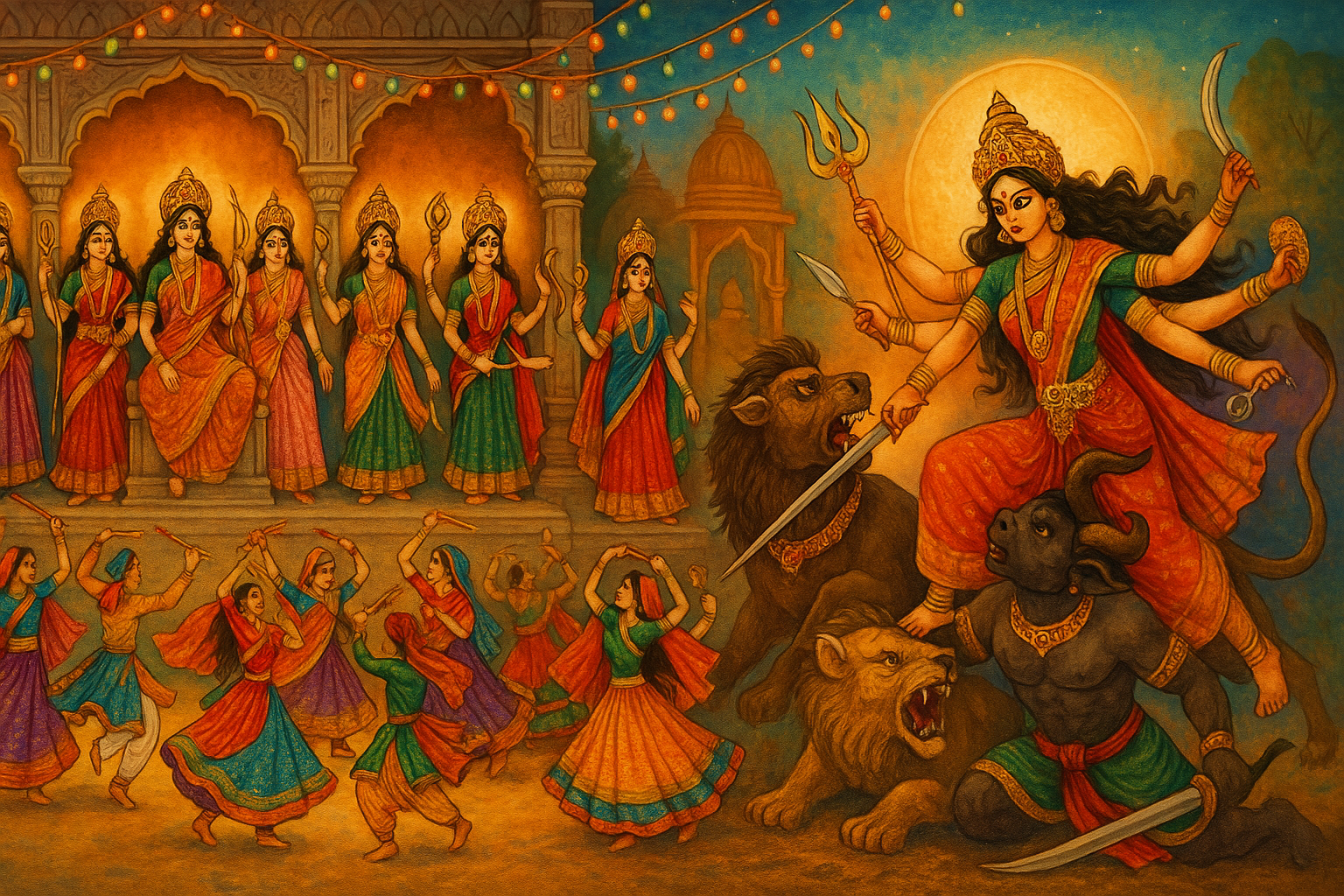
Significance of Navratri – 9 Nights of Divine Feminine Power
Navratri is one of the most spiritually rich and vibrant festivals in Hinduism, celebrated across India and beyond with deep devotion, music, fasting, and dancing. But beyond the celebrations lies a profound truth — the festival is a tribute to the Divine Feminine Energy, worshipped in her many forms over nine sacred nights.
Navratri, which literally means "Nine Nights," honors Goddess Durga and her nine manifestations known as the Navadurga. Each day is dedicated to a specific form of the goddess, symbolizing different aspects of Shakti — strength, compassion, wisdom, protection, and victory over evil.
Origins of Navratri
The roots of Navratri go back to the Devi Mahatmya and other Puranic texts, where the universe is saved from demonic forces by the manifestation of feminine power, or Shakti. One of the most famous stories associated with Navratri is the battle between Goddess Durga and the demon Mahishasura. After a long battle that lasted nine nights and ten days, Durga defeated the demon, restoring peace and dharma.
Navratri is also linked to Lord Rama worshipping the goddess before going to battle with Ravana in the Ramayana, thus connecting the festival with Dussehra, which marks the victory of good over evil.
The 9 Nights – Navadurga and Their Significance
Each night of Navratri celebrates a different form of Durga, known as Navadurga, each carrying her unique energy and blessings:
-
Shailaputri – The daughter of the mountains, symbolizing purity and nature.
-
Brahmacharini – The goddess of penance and spiritual practice.
-
Chandraghanta – The warrior goddess with a crescent moon, protector from evil.
-
Kushmanda – The creator of the universe with her divine smile.
-
Skandamata – The nurturing mother of Lord Kartikeya.
-
Katyayani – The fierce form born to destroy tyranny.
-
Kalaratri – The dark goddess who destroys fear and darkness.
-
Mahagauri – The embodiment of serenity and peace.
-
Siddhidatri – The goddess of supernatural powers and perfection.
Each form is a step in the seeker’s spiritual journey — from purity and discipline to fearlessness and ultimate enlightenment.
More Than a Festival – A Spiritual Process
Navratri is not just a cultural event, but a powerful spiritual process. The nine days symbolize the inner battle against negative qualities such as anger, ego, greed, laziness, and fear. The festival is an opportunity to:
-
Cleanse the body through fasting and sattvic (pure) food.
-
Calm the mind with prayers, meditation, and chanting.
-
Awaken the inner goddess, the Shakti within every being.
It’s a time to invoke strength, clarity, devotion, and transformation. Just as Durga battles external demons, we are encouraged to face our internal demons and emerge victorious.
The Role of Dance and Devotion
In regions like Gujarat, Navratri becomes a grand social and devotional celebration through Garba and Dandiya Raas. These traditional folk dances, performed in circles around a lamp or an idol of the goddess, symbolize the eternal cycle of life and the divine center of existence.
Devotees wear vibrant clothes, offer flowers and sweets to the goddess, chant mantras like “Ya Devi Sarva Bhuteshu…” and participate in community prayers and cultural events.
Regional Variations
Navratri is celebrated in various ways across India:
-
In West Bengal, the last five days are observed as Durga Puja, marking the homecoming of Maa Durga.
-
In Maharashtra and Gujarat, Garba nights are central, full of joy and music.
-
In Tamil Nadu, homes are adorned with Golu dolls and families host gatherings for prayers and songs.
-
In Himachal Pradesh, the festival concludes with processions of local deities in a celebration called Kullu Dussehra.
Despite differences in rituals, the essence remains the same — worship of the divine feminine and celebration of good over evil.
Navratri and the Divine Feminine Today
In modern times, Navratri holds even deeper relevance. It reminds us of the forgotten power of feminine energy, not just in women, but in the universe and within all of us — the nurturing mother, the fearless protector, the wise guide, and the cosmic creator.
In a world where imbalance and chaos often dominate, invoking the Shakti within helps bring back harmony, intuition, strength, and spiritual insight.
Conclusion
Navratri is not just about rituals or dance; it is a profound spiritual celebration of the feminine energy that sustains and protects the universe. As we offer prayers to Durga and her nine forms, we are also invoking our own inner power — the ability to rise above fear, embrace love, and walk the path of dharma.
May these nine nights purify your soul, energize your being, and awaken the divine light within.
